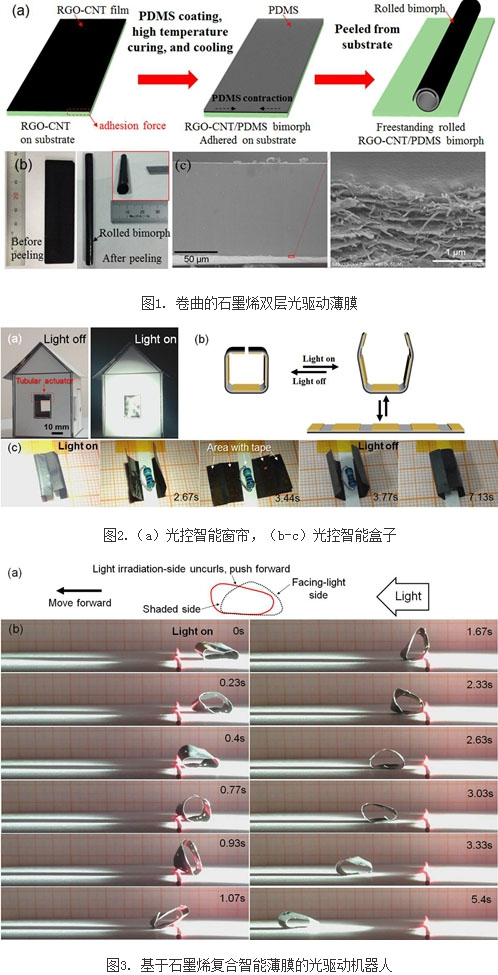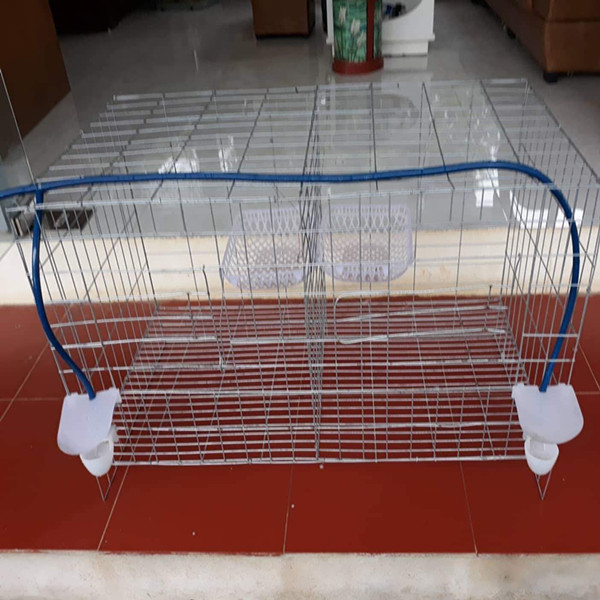
Light-driven devices can convert light energy directly into mechanical deformation without the need for conversion by mechanical transmission means such as gears, and have the characteristics of being remote, non-contact, non-damaging, and easy to operate, especially in sunlight where there is almost endless light. Energy, therefore, optical drive devices have great prospects in practical applications, but also attracted the interest of many researchers. One of the keys to the research of light-driven devices is the development of materials that have energy conversion characteristics under light. Nanomaterials such as carbon nanotubes and graphene have been widely used and developed in the field of light-driven research because of their unique structure, excellent optical and mechanical properties.
Recently, Chen Wei, a researcher at the Suzhou Institute of Nanotechnology and Nanobionics of the Chinese Academy of Sciences, has made new progress in the research of graphene-based high-performance optical drive devices. They combined carbon nanotubes with graphene to give full play to the two-dimensional planar structure of graphene to improve interface contact properties, as well as the good mechanical and thermal conductivity of carbon nanotubes, and deliberately introduced interfacial thermal stress to obtain crimped graphite. A double-layered structure of ene-carbon nanotubes/polymers (Figure 1). The composite film has excellent reversible light driving performance and can develop from a curled shape to a straight shape in a matter of seconds under light irradiation, and when the light is withdrawn, it can quickly return to its initial curled shape, thereby having Shape memory characteristics.
Based on this light-driven film, they developed a series of light-driven devices, including light-controlled smart curtains (Figure 2a). When there is no light, it is completely curled. When strong sunlight is incident on the outside, it can automatically cover the window to block the incident light; the light control smart box that uses the curled structure as a hinge. In the light, the box can be opened automatically, exposing the internal objects to light, and when the light disappears, the light control box is automatically closed (Fig. 2b-c); this curled film is further connected end to end to form a Closed circles develop a special light-driven robot. Under light, the robot can simulate the movement of the tank, including rapid movements, obstacles, and steps (Figure 3). The above prototype devices reveal the prospects of the curled graphene light-driven film in practical applications such as bionic robots, smart homes, solar panels, and solar sails. Related papers were recently published in Advanced Materials (Advanced Materials, 2015, 27, 7867).
This work was supported by the National Natural Science Foundation of China, the Special Funding for Hong Kong, Macao, and Taiwan Cooperation of the Ministry of Science and Technology, the Outstanding Youth Natural Science Fund of Jiangsu Province, the Natural Science Foundation of Jiangsu Province, and the Key Project of Foreign Cooperation of the Chinese Academy of Sciences.
Metal cage's other name is Animal Cage, and then it is including : bird cage, cat cage, rabbit cage, rabbit cage, etc.
The material of metal cage: stainless steel, thin low carbon steel, aluminum alloy. And the surface treatment : hot dipped galvanized, electro-chemical, powder coated, painted, colored zinc, can also as per customer's requirment to produce or surface treatment.
Advantages of metal cage:
beautiful and novel shape
precise manufacture
top quality materials

Metal Cage
Metal Cage,Small Metal Cage,Heavy Duty Metal Cage,Metal Cage Material,Stainless Steel Cage,Welded Metal Cage,Animal Cage
ANPING COUNTY SHANGCHEN WIREMESH PRODUCTS CO.,LTD , https://www.scfiltermesh.com
![<?echo $_SERVER['SERVER_NAME'];?>](/template/twentyseventeen/skin/images/header.jpg)